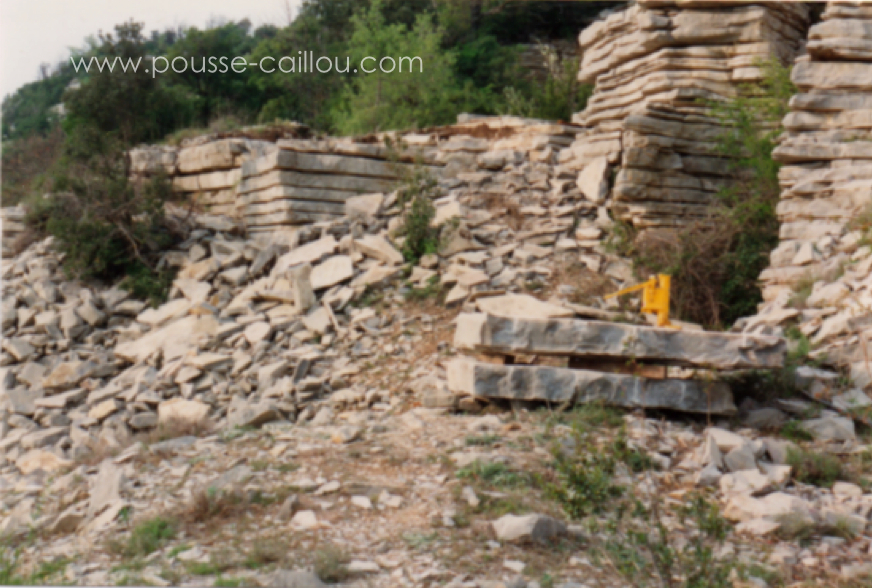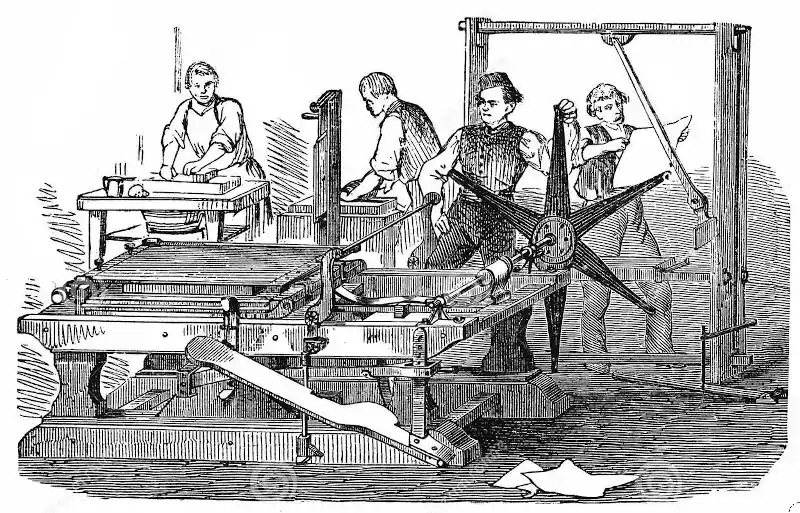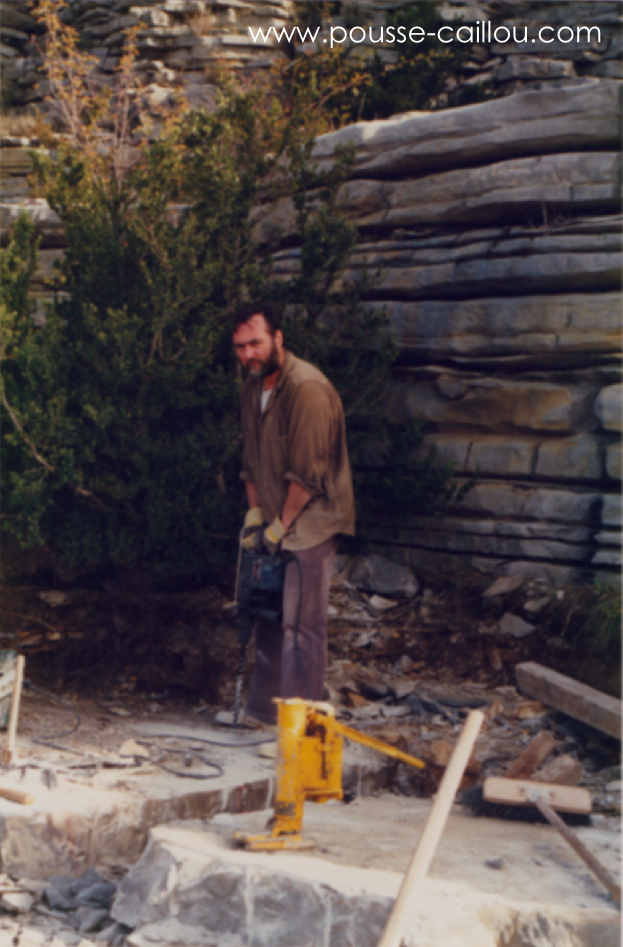Lithographic Stones
Quarries & stone extraction
Lithography uses stones, and finding stones was not easy at he end of the 80's. As they are getting used by grinding, they become too thin, they cannot take the pression of the machines. One day a farmer came to see Luc Valdelièvre explaining he owned a piece of land, North of Montpellier, with a quarry where lithographic used to be extracted. Luc Valdelièvre, who was convinced that this technique needed to be presevered, found a unique opportunity to extract calcium stones in this quarry. after a few tests,he created an association (G.L.O.U.P.) and contacted all the lithography studios in France to share the good news. The work started at the end of the 80's and it was a success.
Lithographic calcium stone of Euzes



Lithography
In 1771 Aloys Senefelder was born in Prague. In 1796 he invented the lithographic process thanks to good luck it seems, but also thanks to the material available to him : Bavarian calcium stone. Quickly used by the newspaper world and public works and commerce, the technique was in line relined. It gave birth to the photolitho then offset for which it was a complement, then, little by little, a replacement.
Real lithography remained lively in the world of artistic creation, seducing all the great artists who used it. In respect to her older sister, engraving, she behaved like a firery and inventive little sister, though never a rival which today allows her to treat and be treated as an equal.

Establishment G.L.O.U.P
Until until the 70's the transition by numerous printers to offset printing permitted the acquisition of handpresses, flat-bed machines, and litho stones, however, even considering wear, this has become more and more difficult.
Creativity and the current market readily welcomes large formats for which the lack of stones is critical. As a remedy and thanks to the ressources of the celebrated lithographic calcium stone of Euzes at Gorniès, north of Montpellier, the G.L.O.U.P. Was formed in 1987.
The aim of the association was to rejuvenate the quarry, closed since the beginning of the century and to once again assure the profession of an ongoing and qualified market. The project was launched on the initiative of Luc Valdelièvre, lithographer, and Claude Duplan, breeder and farmer, resident on the hamlet Euzes and the commune Gorniès, owner of the site of the quarry in the person of its mayor, Jean-Paul Causse.
Stone extraction

As none of the employees are alive today, we had to procede by deduction for what methods to follow, to build up a renewed know-hownon stone extraction.
The first trials were done with the blocks found in the ruins of Euzes factory, a proof of its active period at the beginning of the century. The results were not good. Clearly this frost-cleft stone deteriorates, even if unseen, because of a prolonged exposure to inclement weather and becomes fragile to pressure.
This was confirmed by the very middle quality of upper layers quarried later. To obtain good samples, we had to go down to about 150cm beneath the level left by the old workings which let us procede in the fabrication of about 20 beautiful stones measuring about 60x80 centimeters up to 120x160 centimeters.
To manage the fabrication of samples, the association benefited from the commune of Gorniès' financial help and from that of the General Counsel of Herault and the Regional Delegation of the Commerce and Craft of the Prefecture of the Region
The new stones were taken to the Pousse Caillou workshop where they had their first rough polishing and a printing under strong pressure in a flat-bed machine. They are excellent, but, all of them cannot be qualified as first class. Interested workshops can purchase these stones from the association at cost price. The next step in this operation is to give priority to an understanding between the actors of this first manufacturing, the commune and the commercial distributor of the stones who could guarantee deadlines, high quality and reasonable prices.
The stone (Greek : lithos) is the basic ingredient, the core of lithgraphy. If once again a market for stones is established, there is no reason why the name of this art should divertat the profit of substitution techniques which have nothing in common to lithgraphy other than its prestigious name (highly valuable in themselves, they ought to be called photolitho, chromolitho, offset, etc...).
Too often, unscrupulous editors and distributors are wrongly calling and selling as lithographs the product of other forms of printing. This is unfair to all those who truly try and promote this wonderful art, this is also derogatory towards the public. For that reason, the G.L.O.U.P. Association will propose a new restricted legal definition of the word lithography, to protect the artists and more importantly benefit the public.
Lithographic stones available
Coquille 45x56cm : 120€ / piece
Raisin 50x65cm : 200€ / piece
Jésus 56x76cm : 350€ / piece
Colombier 63x90cm : 500€ / piece
Grand format 80x120cm : 1800€ / piece
